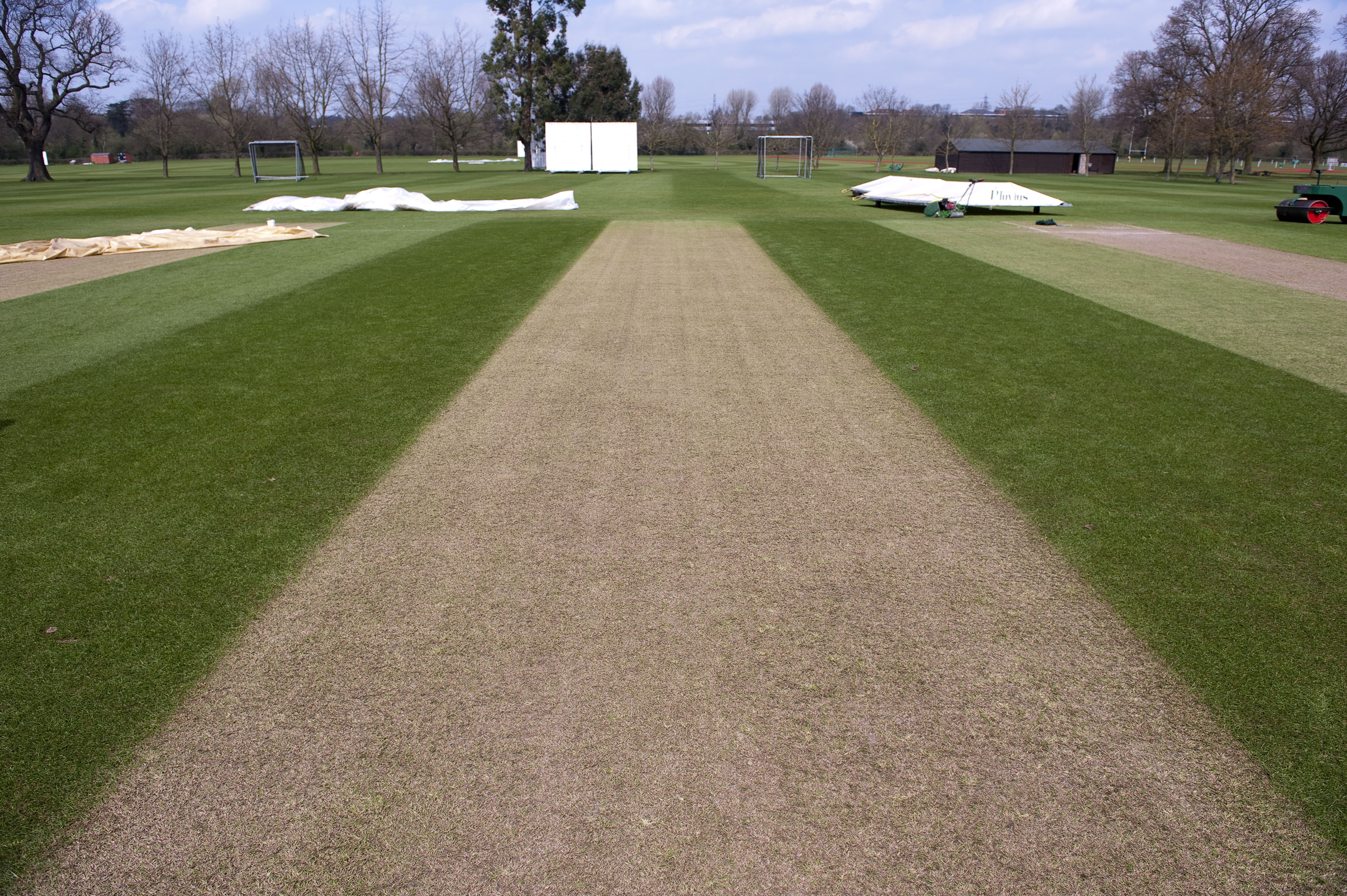This guide will provide you with a method for producing pitches, but before we introduce that method it is important to focus on what we are trying to achieve in cricket grounds management: great pitches.
Depending on the speed of the delivery and bowler, the ball will be in contact with the pitch for between 1.7 and 3 thousandths of a second. That means in an entire 50-over a side game the performance of a pitch will be judged on between 1 and 2 seconds of ball-surface interaction! This might not appear a long time, but it does represent 600 impacts of the ball into the surface – each an event in which the pitch performance counts.
A great cricket pitch is one that allows all players to perform to the best of their ability, without increasing risk of harm. This requires a balance between the needs of the batter and the needs of the bowler:
The batter wants to score runs and therefore requires:
- Predictable and consistent pace and bounce to aid shot selection and timing
- Sufficient bounce to play short-pitched bowling off the back foot.
- Minimal seam and spin to maximise predictability of ball trajectory off the surface.
The bowler wants to take wickets and restrict run scoring, and therefore requires:
- Pace and bounce that reward effort (the pitch does not decelerate the ball excessively on impact or does not reward short fast bowling), creates jeopardy for the batter and allows nicks to carry to the wicket keeper and slips.
- Sufficient seam movement to provide some jeopardy to the batter and to attack both edges of the bat and bring LBW into play.
- Bounce and turn for a spin bowler that allows them to move the ball off the surface and threaten both edges of the bat.
- Note that swing bowling is related to bowler skill, ball type and atmospheric conditions – it is rarely a function of pitch properties.
Striking the right balance
As you can see this is a balance – a pitch that is too placid and predictable (often called ‘flat’) will favour the batter and not allow the bowler to demonstrate their skill and limit their enjoyment. On the otherhand, a pitch that is too lively or unpredictable will favour the bowler and prevent a batter demonstrating their skill (and will probably result in short game that is of little enjoyment to anyone).
In extreme, an unfit pitch is unsafe and will cause injury to batters.
Pitches in the longer formats of the game may have differing characteristics as the game progresses.
A great pitch will allow two equally skilled teams to reach a result in the last over of a limited overs game, or in games where a draw is a result, for all four results to be possible in the last few overs of the game.
While we may strive for the ‘Perfect Pitch’ we should not lose sight of two things:
- The aim is to provide a pitch that is firstly safe and enjoyable for the players,.
- The quality of the pitch is limited by the resources available – very few cricket clubs have the resources of a Test Match Ground. Do not be too hard on yourself, especially when you are starting out in cricket grounds management or where you are operating on a tight budget, with limited time and equipment (which is the majority of clubs).
The reality is that in a one-day (or one-afternoon) format game the pitch should not decide the outcome. In multi-day, two-innings cricket the pitch will need to offer more to the bowler in the latter half of the match. In both situations, the role of the grounds manager is critical.
How a pitch looks affects perception of performance
Note that all the above descriptions of a good pitch are about how the pitch performs, not how it looks, but how it looks can affect players’ perceptions of how the pitch will perform so we need to take care to present the pitch to the best of our available resources. Also, the descriptions all relate to the ball-surface interaction, but a pitch cannot be considered great if the bowler cannot achieve a sure footing to deliver the ball and the batter cannot move safely across the pitch.
Next steps
In the next section we look at how to prepare a pitch from scratch to first use.


 Tweet
Tweet